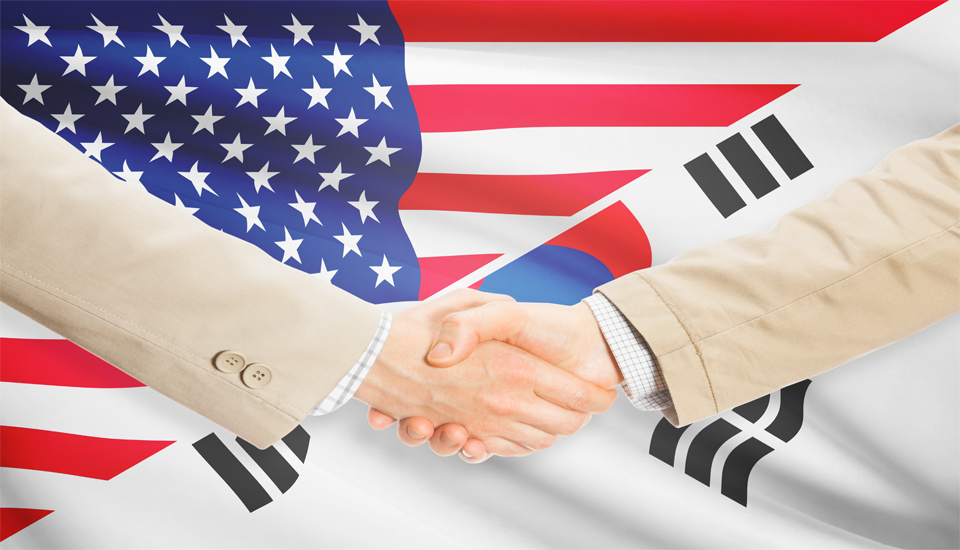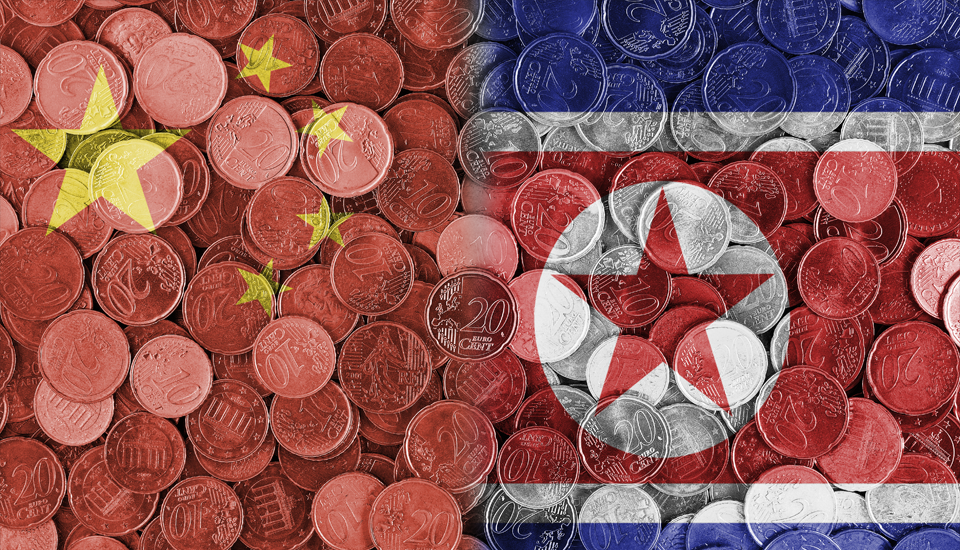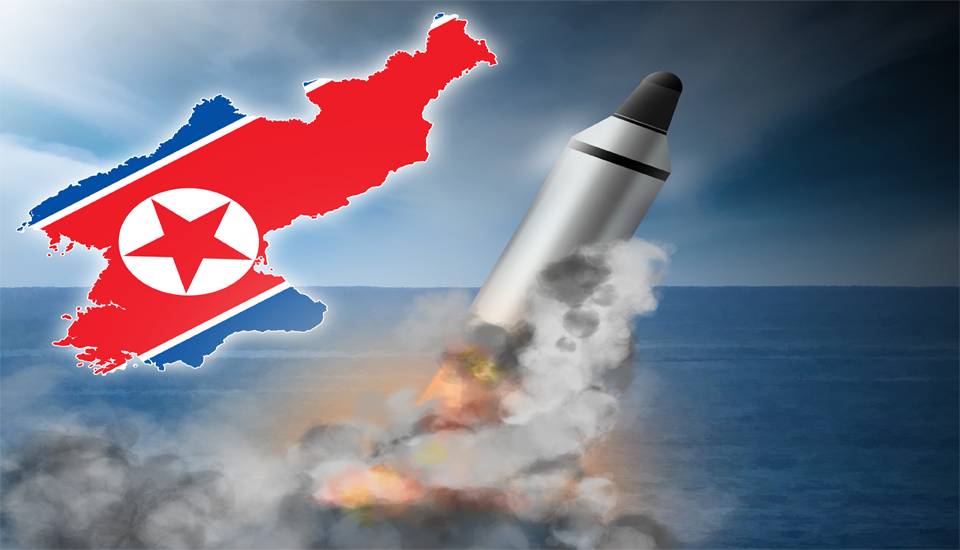North Korea has overcome two crises of regime collapse. The first crisis was during the collapse of socialism in the Soviet Union and Eastern Europe in the late 1980s, when conjectures on the sudden change in North Korea first were made, but hereditary succession to Kim Jong-il successfully took place. The second prediction of a regime collapse was made following the destabilization of the regime during the outbreak of the Jasmine Revolution in the Middle East in 2011 and the death of Kim Jong-il, but Kim Jong-un had successfully undergone a three-generational hereditary succession. Kim has grabbed the international community’s attention by removing all seven of his potential political rivals- the ‘gang of seven’ who escorted Kim Jong-il’s hearse following his death-, and luring the U.S. to denuclearization talks along with holding three U.S.-North Korea summits by using nuclear missile developments as leverage following his ascension to power.
So what has made the North Korean regime’s hereditary succession possible? Existing discussions on the durability of the North Korean regime include studies analyzing the impact of socialist systemic transition on the North, diagnosis of the drivers of the Jasmine Revolution and the possibility of changes in the North Korean system, empirical studies of the North Korean regime's crisis index through surveys and interviews with North Korean defectors, and the possibility of divisions within the North Korean power elite.
Despite their significance, there are limitations to these studies in that they have overlooked the historical process of formulation and evolution of the Suryong system and the Party-Government-Military Elite Complex. These studies have neglected the characteristics of the North Korean regime, notably the method of hereditary power transfer, the ‘Baekdu bloodline’ as a source of dictatorial power, and the ‘partisan’ nature of the elite.
North Korea is led by a socialist dictatorship of the Workers' Party of Korea, based on a mixture of one-party dictatorship and one-man dictatorship. In other words, it is appropriate to say that the system is maintained by an institutionalized ‘winning coalition’ created by the partnership of a three-generation lineage of dictators known as the ‘Suryong’ (the supreme leader), and the Party-Government-Military Complex that monopolizes the power of the ruling party, the government, and the military.
Gandhi and Przworski argue that regimes in which the ruler’s power is constrained by institutions in fact last longer. Despite unfavorable domestic and international factors that threatened the regime's survival, the ‘rules from the playbook for the three generations of supreme leaders’, which aims to institutionalize the Suryong system and the Party-Government-Military complex, was a critical factor in stabilizing the regime, allowing North Korea to establish a third-generational hereditary system from Kim Il-sung to Kim Jong-un. This was done legally by using party organizations (Party Congress, Conference of Party Representatives, politburo meeting, Party Central Committee) and state organizations (Supreme People's Assembly).
The first ‘rule from the playbook’ is the institutionalization of the Suryong system. The institutionalization of the Suryong system was done first by manipulating the history of Kim Il-sung's partisan struggle against Japan into a revolutionary tradition and sanctified Kim Il-sung’s family by the term ‘Mount Baekdu bloodline’. On top of that, the system was institutionalized with the ideological backing by the ‘Suryong theory’ and was created in accordance with the Party Protocol and Constitution at a time when the leadership was passed on based on the "Ten Principles for the Establishment of a Monolithic Ideological System," the so-called supreme law of the country. In this process, the previous supreme leader and the current supreme leader were differentiated by the ‘institutional position strategy’. The ‘institutional position strategy’ is a tactic to maintain the Suryong system by institutionalizing the legitimacy of hereditary succession by stipulating the position of the supreme leader by the party and by the law.
Kim Il-sung became the leader of the Supreme People's Assembly in 1972 by revising the socialist constitution. At the 10th session of the Supreme People's Assembly in September 1998, Kim Jong-il deified Kim Il-sung as the eternal president and abolished the presidential system, while becoming the next Suryong as the Chairman of the National Defense Commission.>> At the 13th session of the Supreme People's Assembly held in June 2016, Kim Jong-un became the third Suryong, deifying Kim Il-sung and Kim Jong-il as eternal presidents and becoming the Chairman of the State Affairs Commission. In order to maintain the absolute authority of the leader, the previous leaders have kept posthumous titles – Kim Jong Il remains “eternal general secretary” and Kim Il Sung is “eternal president” and the current leader created and institutionalized a new position into power.
The second ‘rule of from the playbook’ is the institutionalization of the Party-Government-Military Complex. The roots of the Party-Government-Military Complex derive from Kim Il-sung’s partisan comrades, who fought together in the anti-Japanese armed struggle. The Party-Government-Military elite, comprised of these partisans, were appointed to key posts by the Party Congress and the Supreme People's Assembly based on the supreme leader's instructions, Article 61 of the Socialist Constitution in 1972, the Principle for Recruiting Officers, and the
“Ten Principles for the Establishment of a Monolithic Ideological System." The descendants of the Party-Government-Military elite also succeeded in the position as an extension of the hereditary succession of Kim Jong-il and Kim Jong-un, entrenching their position as a ‘complex’, and ending up in the same boat as their supreme leader. Therefore, due to its innate limitations of sharing the same legitimacy, the Party-Government-Military Complex is blocked from objecting to the Suryong system, which makes the complex serve as an institutional mechanism that prolongs the supreme leader’s rule.
As such, behind North Korea’s systemic stability which allowed the successful hereditary transitions lies the institutionalization of the Suryong system and the Party-Government-Military Complex. This enables an exchange of loyalty and preferential treatment between the two pillars of the North Korean regime, consolidating the ‘winning coalition.’ The institutionalization of the Suryong system and the Party-Government-Military Complex is a product of a self-reinforcing mechanism with strong path-dependence. To deny the system created during the Kim Il-sung era would be to deny Kim Il-sung himself and the hereditary system. A severance of the hereditary system would be a self-contradictory act undermining the legitimacy of the North Korean regime. The path-dependent system set by the previous supreme leader would condemn the future generation in a self-preserving feedback loop even as they realize the contradictions within.
However, signs of change have been detected in the ‘rules from the playbook.’ Starting from the 8th Party Congress, ‘Kimjongunism’ (a moniker for Kim Jong-un’s own offshoot-ideology), has emerged, along with new discourse on the Suryong system. Personal praise for the three Kim leaders has also disappeared from the party protocol. In particular, North Korea revised party rules to create the post of a “first secretary,” who would act as a representative of Kim Jong-un (the general secretary) and share Kim’s executive power in his absence or as his substitute.
Historically, North Korea has not established a separate institutional mechanism for a contingency of the “Suryong,” as preparing for the absence of the leadership believed to be a “demigod” could trigger a power struggle and jeopardize the hereditary power succession process. However, at the 8th Party Congress, North Korea chose to make these historical changes. Notably, this change took place after signs of regime instability were showing up, such as rumors about Kim Jong-un’s failing health. It should be noted that the timing of rumors about Kim Jong-un’s bad health, the delegation of Kim Jong-un’s power to Kim Yo-jong, and Kim Yo-jong’s coup against her brother coincided with the fruitless termination of the U.S.-DPRK denuclearization summits in 2019.
The institutionalization of the Suryong system and the Party-Government-Military Complex can be used as a mechanism to diagnose the stability of the Kim Jong-un regime and predict the outlook of Kim Jong-un’s succession system. This is because changes in the Suryong system require a new method of succession and can provide maneuvering space for alternative political forces to emerge accordingly.■
■ Heung Seog Lee is a professor at Kookmin University's Graduate School of Politics. He received his ph. D from the Department of Politics at Kookmin University. He served as an intelligence officer and analyzed North Korea for more than 30 years in the Combined Forces Command and the Joint Chiefs of Staff. Currently, he is secretary-general of the Global Defense Research Forum and the head of the North Korean Research Center at the North Pole Research Institute of the Korean Military Academy. His main research areas are the North Korean regime & national strategy, nuclear strategy, and National Intelligence.
■ Typeset by Junghoo ParkResearch Associate
For inquiries: 02 2277 1683 (ext. 205) | jhpark@eai.or.kr





